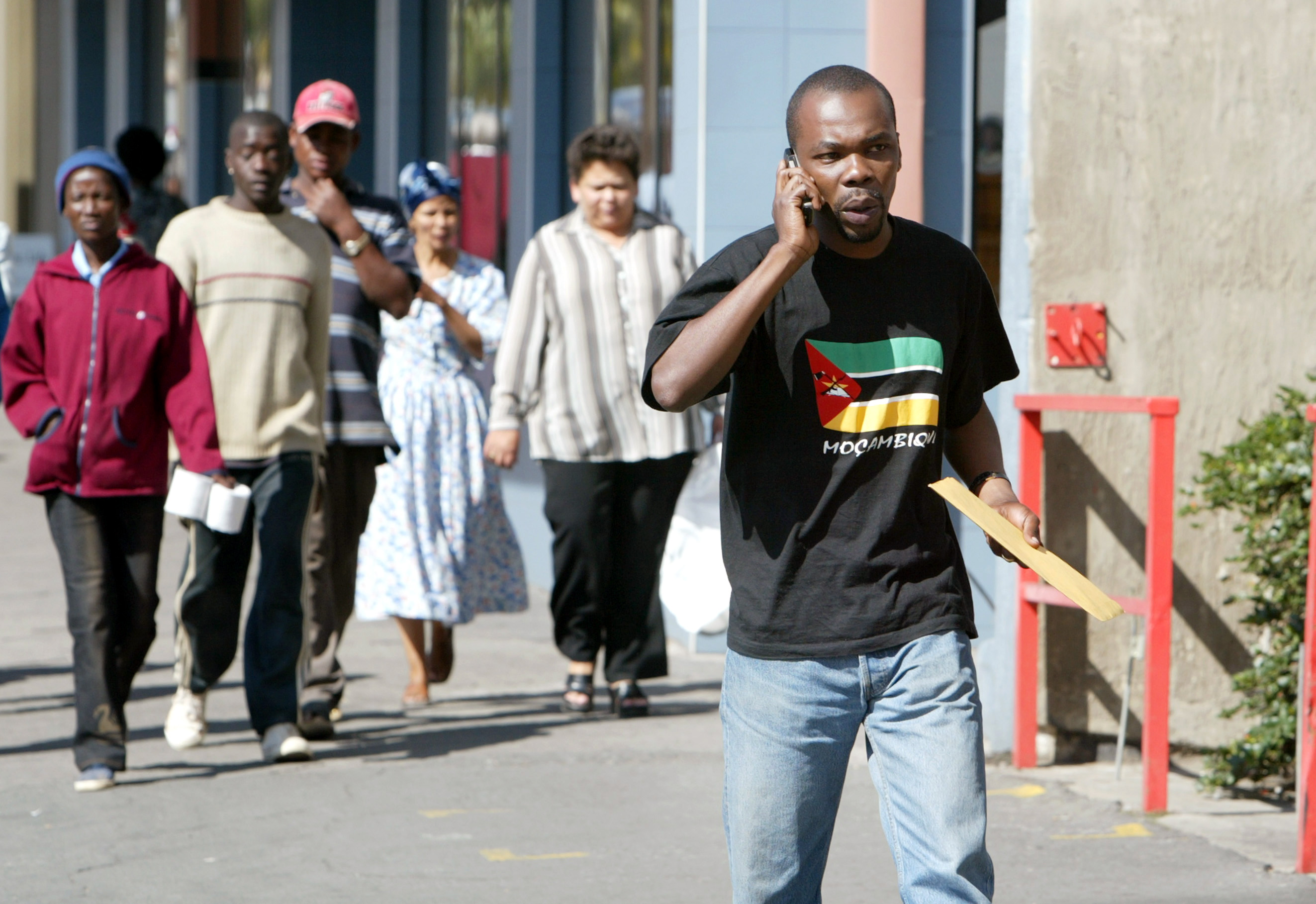Pedestrians with mobile phones in Windhuk, Namibia
Copyright© Thomas Köhler/photothek.net
Economic situation Difficult path out of crisis
The COVID-19 crisis exacerbated the situation further. Gross domestic product fell by 8.5 per cent in 2020, and tourism – a key industry in Namibia – largely collapsed. Public debt rose as a result of pandemic response measures and is expected to continue to grow over the next three years. The major rating agencies have published correspondingly negative forecasts of the country’s creditworthiness.
Namibia experienced a slight economic upturn of 0.8 per cent in 2021, and economic growth of 2.7 per cent is anticipated for 2022. The strain on the economy and budget means that the government has a limited capacity for measures to stimulate growth, however.
High unemployment rate
Despite a shortage of skilled workers in Namibia’s labour market, the economy is unable to create sufficient jobs: the official unemployment rate is 20.4 per cent (2020), and is as high as 38 per cent for young people aged 15 to 24.
The COVID-19 crisis further increased unemployment. There are currently no reliable figures, but estimates suggest an increase of up to 70 per cent. A large proportion of people’s incomes are generated in the informal sector.
Development potential
Namibia offers a comparatively promising environment for sustainable development. This includes an established rule of law, an advantageous geographical location with access to the sea, a wealth of natural resources and, in comparison with the wider region, well-developed infrastructure, for example in the area of telecommunications. Opportunities for development lie in the areas of mineral resources, fishing and tourism, among other things.
Mining forms the backbone of the Namibian economy. Diamonds, gold, copper, uranium and other mineral resources account for a large share of the country’s exports. The extraction of these minerals has thus far created very few jobs in the country itself, however. Far more employment opportunities could be generated if mineral resources were also refined and processed in the country.
The Economic Partnership Agreement (EPA) with the European Union and the African Continental Free Trade Area (AfCFTA) also offer opportunities for entering new markets and expanding exports.
Thanks to its scenic beauty, its rich flora and fauna and its cultural diversity, Namibia’s tourism sector has considerable growth potential as well, particularly in the area of ecotourism. The creation and sustainable management of national parks is helping to create long-term employment and new income opportunities.
As at: 27/05/2022
